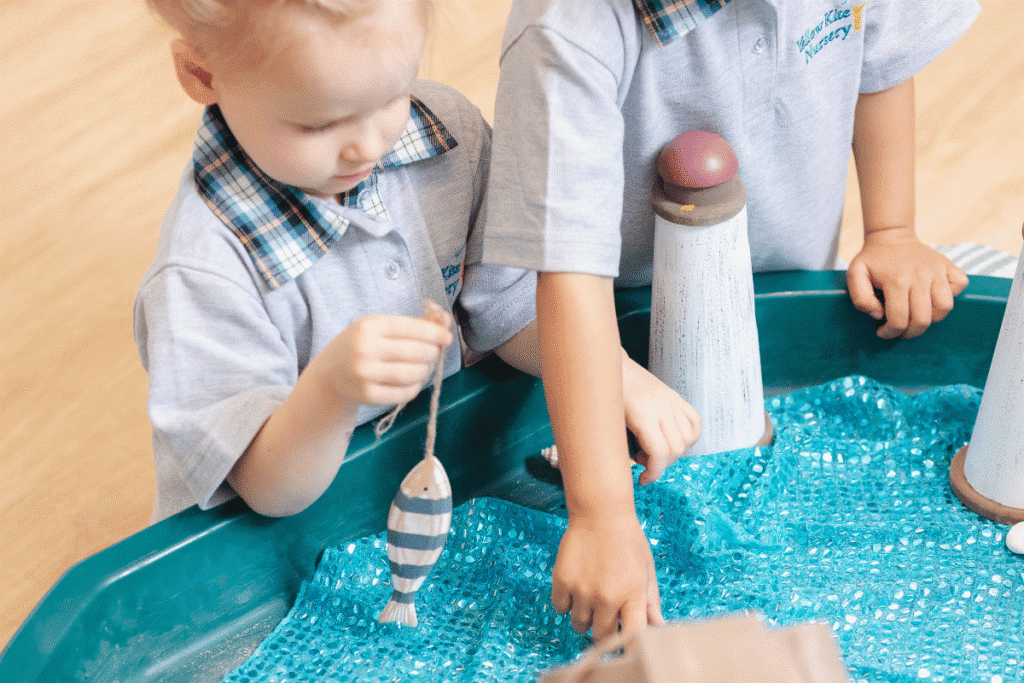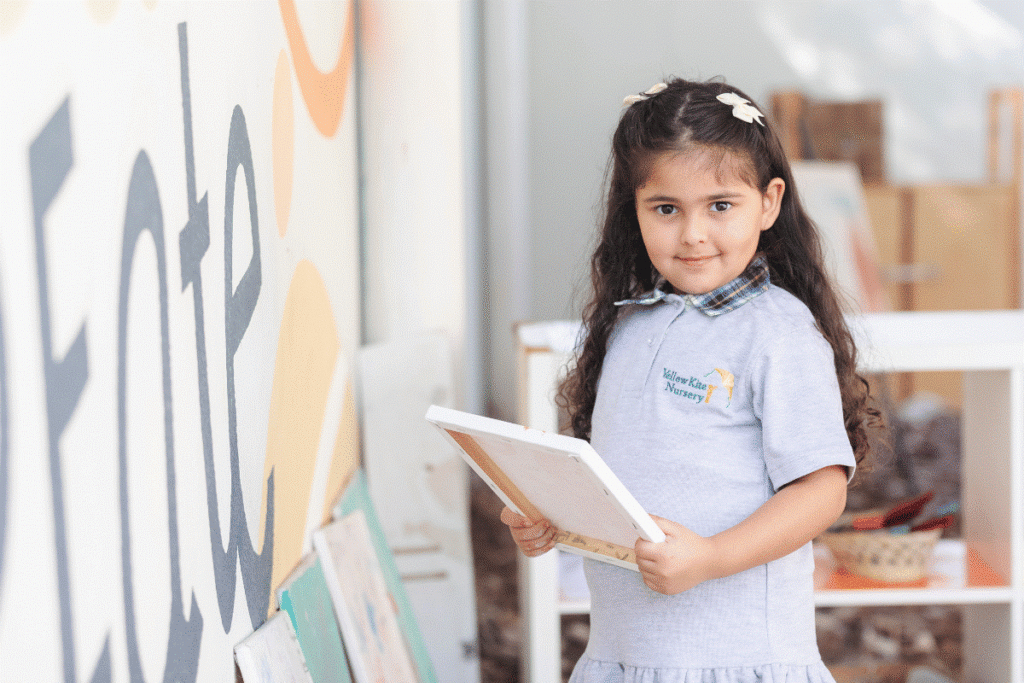Walk into any Curiosity Approach setting and you’ll notice something parents often comment on straight away: resources aren’t glued to one place. A basket of wooden blocks might appear in the role-play kitchen. A handful of shells might migrate from the investigation station into the cosy book corner. To the untrained eye, it can look a little chaotic.
But here’s the thing. When children move resources around, they aren’t “messing up” the classroom. They’re following their natural curiosity. And when we give them the freedom to do this, magical things happen.
Let’s dive into why it matters, how it supports learning, and how you can embrace this mindset at home too.
Children Are Natural Explorers
Children don’t see boundaries between areas in the same way adults do. For them, the whole environment is a canvas. They’ll pick up a block and think, “What happens if I use this in the home corner?” or they’ll take leaves from outside to decorate a sandcastle indoors.
This movement shows:
- Creativity in action
- The ability to think beyond labels (“blocks belong in construction”)
- A drive to test new ideas
When we restrict resources, we restrict thinking. By contrast, when we allow freedom, we fuel curiosity.

What’s Really Happening When They Move Things
It might feel like “tidy” versus “messy,” but the truth runs deeper. When children carry resources across spaces, they’re engaging in higher-level learning:
- Problem-solving – finding new uses for familiar objects.
- Symbolic thinking – using one item to represent another (a stick becomes a wand).
- Connection-making – linking experiences across areas of the nursery.
- Ownership – feeling trusted to direct their own learning.
This is exactly what we want for our little learners..
The Curiosity Approach Mindset
At Yellow Kite Nursery in Dubai, we follow the Curiosity Approach, which places children’s agency at the heart of learning. Instead of saying, “No, the shells must stay here,” we pause and think: “What are they trying to explore by moving them?”
This approach requires us as adults to let go of some control. It’s tempting to step in because it makes life tidier and easier. But if we do, we’re prioritising our needs over the child’s learning journey.
And when we trust children, they rise to it. As a nursery in Dubai that values child-led exploration, we’ve seen firsthand how this freedom transforms the way children engage with their environment.
Why Parents Sometimes Worry
We understand. Parents walk in and see a doll’s tea party happening with pinecones, or paintbrushes lined up in the construction zone, and it can feel messy or disorganised.
Here’s the reassurance:
- It’s not mess, it’s meaning.
- Every object has become part of a bigger story.
- This flexibility builds the exact skills children need in later life — critical thinking, adaptability, creativity.
So rather than stopping it, we embrace it.
Actionable Tips for Parents and Teachers
It’s one thing to understand why this matters. But how do you put it into practice?
In the Classroom:
- Allow freedom within limits – let children transport resources, but encourage them to tidy up afterwards.
- Step back before stepping in – ask yourself, “Is this harmful or unsafe?” If not, let it play out.
- Observe closely – watch how children use items in different ways. This often reveals interests you can build on.
- Model respect – show children how to handle resources carefully, even if they’re not in their “usual” spot.
At Home:
- Say yes to mixing – let the playdough tools join the Lego table, or bring nature finds into the dolls’ house.
- Provide baskets and trays – children love transporting objects. Give them something to carry items safely.
- Invite open-ended play – instead of saying, “Blocks are for building,” ask, “What else could these be?”
- Celebrate creativity – when your child uses spoons as microphones, resist correcting. Join in.
These small shifts can transform playtime into rich, curiosity-driven learning.
But What About Tidy-Up Time?
A common question from parents is: “Doesn’t this make tidying harder?”
Yes, it can take longer. But it’s also an opportunity. Tidy-up time teaches responsibility, teamwork, and respect for shared resources. At Yellow Kite, we:
- Make tidy-up part of the learning, not a chore.
- Use songs or challenges to make it fun.
- Involve children in deciding where resources belong.
When children feel ownership of their environment, they’re more likely to respect it.
Why This Matters in the Bigger Picture
Allowing resources to travel may sound small, but it reflects a bigger philosophy. We want children to see the world as connected, not divided into rigid boxes. Life isn’t compartmentalised — and learning shouldn’t be either.
By trusting children to make choices, we’re preparing them for:
- A future where flexibility is key.
- Workplaces that value problem-solvers and creative thinkers.
- A life where they feel confident to try, explore, and experiment.
This approach is what sets progressive early years education apart, and it’s something families increasingly look for when choosing a nursery in Dubai.
A Final Thought for Parents
If you catch yourself thinking, “But that doesn’t belong there,” pause. Ask instead:
- What might my child be discovering?
- How can I support this exploration?
- What does this say about their interests right now?
Often, the answer is far richer than you’d expect.

Key Takeaways
- Children moving resources around isn’t chaos — it’s curiosity.
- This freedom develops creativity, problem-solving, and ownership.
- Parents and teachers can encourage it by stepping back and trusting the process.
- Tidying up becomes a chance to learn responsibility, not just to clean.
- The bigger goal: nurturing flexible, confident, curious learners.

